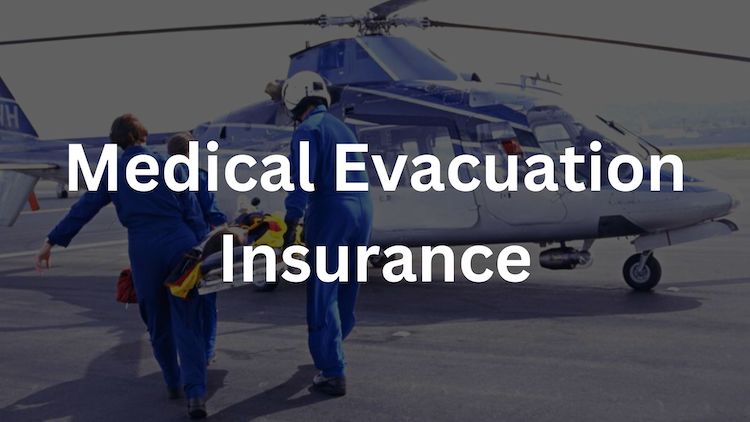Vacations abroad can be marred by illness or injury, which becomes even more distressing when you are far from home. In such situations, immediate medical care, medical helicopter rescue insurance or airlift transportation might be necessary. To safeguard your wellbeing and against the financial burden of these emergencies, having a comprehensive travel insurance plan with medical evacuation insurance is crucial.
This review blog looks at the best medical evacuation insurance plans, as well as everything you need to know about medical evacuation and repatriation insurance.
Quick Answer: Best Medical Evacuation Insurance
Editors Choice
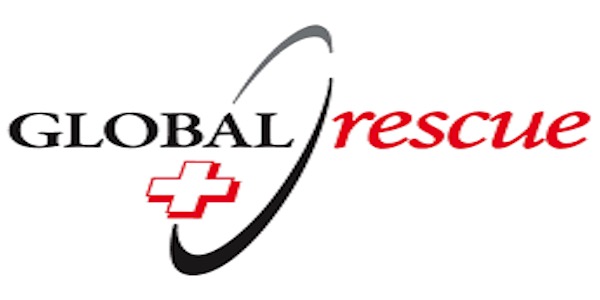
Global Rescue Insurance

Coverage for Trekkers

No limitation on altitude for coverage

Emergency medical coverage: to $100,000
2nd Best Choice

World Nomads Insurance

Coverage for Trekkers

Coverage until 22,965 feet (7,000 meters)

Up to $500,000 in coverage
3rd Best Choice
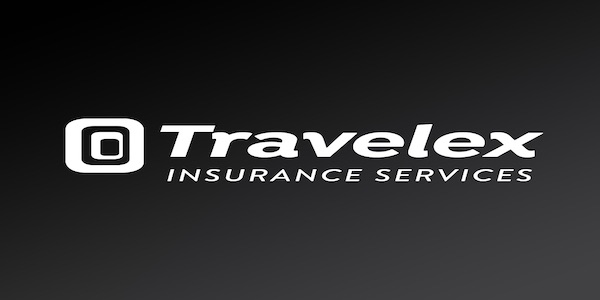
Travelex Trekking Insurance

Coverage for Trekkers

Coverage until 20,000 feet (6,000 meters)

Up to $1 million in coverage
Best Medical Evacuation Insurance Providers
The information below highlights our top three choices for medical evacuation and repatriation insurance which are perfect for trekkers and adventure sports enthusiasts. We must insist that you look through the policies and what they cover before you purchase one. Additionally, if you are looking for more traditional travel insurance, have a look at one our other blogs: best trekking travel insurance, and insurance for trekking in Nepal.
Our top three choices for medivac insurance:
1. Global Rescue Insurance:

Global Rescue Trekking Insurance is a well-known provider of rescue memberships in high-altitude and trekking circles. This plan is highly recommended by many of Nepal’s travel and expedition companies.
The most significant advantage for travelers with Global Rescue’s rescue and evacuation insurance is no elevation limit. Meaning that their policy covers you no matter where you are in the world – even Everest!
You can get a membership on short- or long-term basis (7, 14, or 30 days), making the plan extremely flexible and affordable! Their specialty is with medical rescue and reparation insurance, and does not cover travel cancellations, delays, baggage, or medical and dental expenses.
However, they do offer add-on travel insurance policy with IMG (IMG Signature Travel Insurance), which provides coverage for all these items in addition to your high-altitude and rescue/evacuation coverage.
Make sure to check out my Global Rescue Insurance review blog, it will go into depth about what the medical Helicopter evacuation coverage offers!
Main Features:

Medical evacuation from anywhere in the world

No limitation on altitude for coverage

Emergency medical coverage — up to $100,000

Trip cancellation — up to $100,000

Lost luggage/baggage delay — up to $2,500

Up to 150% of trip cost insured for trip interruption
Pros and Cons of WorldTrips Hiking Insurance:
The following are a list of pros and cons, things that we love and hate about the insurance policy:
Pros:
- Secure the value of your entire trip
- Industry’s most complete travel insurance products
- Field Rescue services from the point of injury or illness
- Face-to-face video consultations and advice about your diagnosis
- Will rescue you no matter where you are in the world
- Help determining the best possible treatment options
Cons:
- Can be expensive depending on the travelers usage of the plan
- Have to buy an annual membership
- Emergency medical expense coverage of $100,000 is quite low when compared to other altitude insurance policies
1. World Nomads Insurance
As an entity, World Nomads has been recommended by well known companies in the travel industry such as Lonely Planet and National Geographic — add with the thousands of customer reviews from Trust Pilot that they have garnished over the years, it is easy to see the great reputation that World Nomads has.
They are also backed by secure, trusted, and specialist underwriters who provide travelers with great cover, 24-hour emergency assistance, and the highest levels of support and claims management!
Let’s first start with who World Nomads is. You can also read my full World Nomads Insurance Review to take a deep dive into the insurance provider.
Who are World Nomads?
Since 2002, World Nomads have been protecting, connecting and inspiring independent travelers.
They offer simple and flexible travel insurance and safety advice to help you travel.
Because they believe in giving back to the places we travel to, World Nomads also enables you to make a difference with a micro-donation when you buy a policy.
And they’ll help you plan your trip with free downloadable guides, travel tips, responsible travel insights and recommendations from their global community.
World Nomads provides travel insurance for travelers in over 100 countries. As an affiliate, we receive a fee when you get a quote from World Nomads using this link. We do not represent World Nomads. This is information only and not a recommendation to buy travel insurance.
Main Features:

Coverage for Trekkers

Standard Plan until 19,685 feet (6,000 meters)

$500,000 in coverage

Trip cancellation insurance

Standard Plan until 22,965 feet (7,000 meters)

Emergency medical evacuation
Pros and Cons of World Nomads Insurance:
The following are a list of pros and cons, things that we love and hate about the insurance policy:
Pros:
- Covers a Lot of Countries Worldwide
- High Coverage for Medical Expenses
- Flexible Prices
- Buy or Extend Anytime, Anywhere
- Perfect for adventure-loving travelers
- 24/7 customer service with online claims option
Cons:
- Limited age coverage for seniors
- Coverage can differ depending on location and nationality
- Limited COVID coverage
2. Travelex Trekking Insurance:
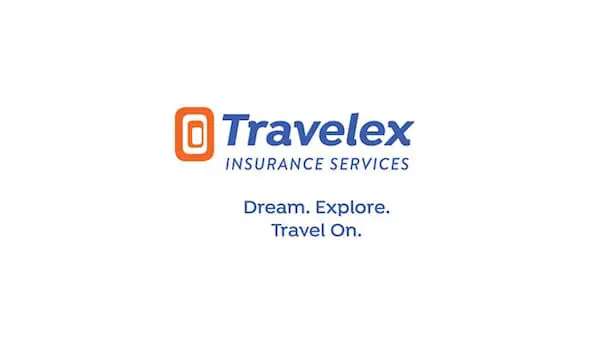
Our third choice for insurance that provides medical evacuation and repatriation insurance is Travelex insurance. It is a great budget-friendly provider that offers affordable rates and coverage for families. Moreover, they offer plan extensions that will allow you to be insured while trekking at high elevations. They provide coverage on individual bases and will allow you to get trekking insurance up to 20,000 feet (6,000 meters) above sea level. This makes it great for climbers looking to hike up to Everest Base Camp trek in Nepal or other places around the world like the Alps, the Andes or Kilimanjaro!
Another great aspect that we like about the Travelex’s service, is that they have an app that you can download which will provide important information about the country you are traveling to. It will help keep you safe by providing real-time security alerts, information about food and water safety, as well as ATM locations!
If you are looking for a budget travel insurance plan that will cover the adventure sports aspect of your vacation no matter where you are in the world, Travelex will be a great fit for you! You can get a free quote from hen Travelex climbing insurance. You can also read our full Travelex Insurance review, to learn more about how they are one of the best trekking insurance providers!
Main Features:

Coverage for Trekkers

Coverage upto 20,000 feet (6,000 meters) above sea level

Up to $1 million in coverage

Free coverage for children under 17

Can apply for pre-existing medical condition waivers

Travel delay coverage of $2,000
Pros and Cons of Travelex Trekking Insurance:
The following are a list of pros and cons, things that we love and hate about the insurance policy:
Pros:
- The travel insurance will include free coverage for children under the age of 17 if they are with an adult that is covered by the insurance policy
- Offers an adventure sports upgrade, including for high elevation trekking
- You can upgrade the plan to get a “cancel for any reason”
- Medical expense coverage is primary, compared to some competitors’ secondary coverage.
- Provides great travel delay coverage. Providing USD $2,000 per person after an initial five-hour delay.
Cons:
- “Cancel for any reason” coverage provides 50% reimbursement of the non-refundable deposits – which is lower than most travel insurance providers, who usually provide 75%
- The emergency medical expense coverage for the Travel Select plan is $50,000, compared to higher levels from top competitors.
- Baggage delay benefits only apply after an initial 12-hour wait – longer than most companies
What is emergency medical evacuation (Medevac) insurance?
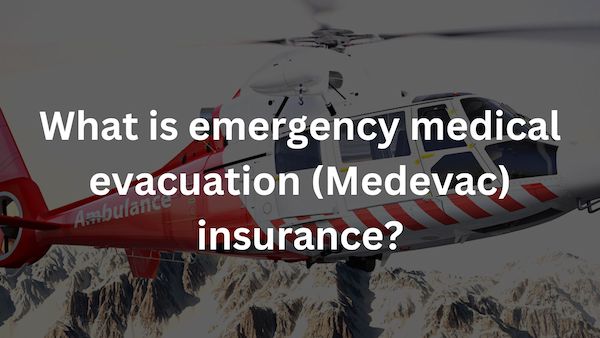
Medical evacuation insurance is a common inclusion within comprehensive travel insurance policies, often referred to as emergency medical evacuation, medical evacuation, or repatriation insurance.
Coverage is designed to handle the expenses associated with emergency medical transportation in the event of a serious injury or illness while you are traveling – no matter where you are in the world. Should you encounter a medical emergency and the nearest appropriate treatment center is distant, this insurance may also cover the cost of transporting you back to your home.
There are differences between medical evacuation insurance and standard medical travel insurance which you should be aware of before deciding which coverage to purchase. The section below highlights these differences.
Medical Evacuation Insurance vs. Medical Travel Insurance:
While traveling, it is prudent to have both emergency medical evacuation coverage and travel medical insurance in place. These insurance products complement each other, offering distinct benefits for crucial services and treatments you may require during your travels.
While searching for the most suitable travel insurance plan, remember that medical evacuation coverage caters to the expenses involved in transporting you to receive proper medical care. This coverage applies whether it entails emergency helicopter rescue or plane journey to a local hospital or a medically-supported trip back to the United States from a non-U.S. hospital.
On the other hand, medical travel insurance covers emergency medical care you might need while away from home, encompassing procedures like surgeries, treatments, and medicines required for your recovery. This coverage can also address doctor’s bills, X-rays, lab tests, and other medical services necessary during your trip. Some travel medical insurance policies even provide a separate limit for dental expenses if an accident leads to dental trauma requiring treatment.
The main differences between Medical Evacuation Insurance and Medical Travel Insurance lie in their specific coverage and focus:
1. Coverage Scope:
- Medical Evacuation Insurance: This type of insurance primarily focuses on emergency transportation services, arranging for transportation to the nearest adequate medical facility in the event of a serious injury or illness during travel.
- Medical Travel Insurance: On the other hand, Medical Travel Insurance primarily covers the costs of medical treatment and expenses incurred during your trip. It addresses emergency medical care, doctor visits, hospitalization, prescription medications, and other related medical services required during your travels.
2. Main Purpose:
- Medical Evacuation Insurance: The main purpose of Medical Evacuation Insurance is to guarantee timely and effective evacuation in critical situations where local medical facilities may not be equipped to provide adequate care.
- Medical Travel Insurance: Medical Travel Insurance is designed to cover the costs of medical treatments and services while traveling, similar to health insurance coverage. It ensures that you have access to necessary medical care and alleviates the financial burden of unexpected medical expenses abroad.
3. Service Activation:
- Medical Evacuation Insurance: This insurance is typically activated when a qualified physician certifies that your injury or illness requires immediate evacuation for proper medical treatment. The insurance company arranges and coordinates the evacuation process to ensure your safety.
- Medical Travel Insurance: Medical Travel Insurance comes into play when you need medical attention during your trip. It covers the expenses incurred for medical treatments and services received while traveling.
In summary, Medical Evacuation Insurance centers on providing emergency transportation services, while Medical Travel Insurance concentrates on covering medical treatments and services during your journey. These two types of insurance can be complementary, offering a comprehensive safety net for travelers facing medical emergencies away from home.
What Does Medical Evacuation Insurance Cover?
In remote locations, medical evacuation expenses can be costly. Daniel Durazo, a spokesperson with Allianz Global Assistance had this to say:
“The cost of emergency medical transportation can run into the tens of thousands of dollars or more, and varies based on the traveler’s health condition, care required and their location.”
Lacking emergency medical evacuation (Medevac) insurance means you would be burdened with the full weight of these expenses in the event you require transportation via helicopter, plane, or ambulance to preserve your life.
An example of what you may have to pay depending on your location in the world are as follows:
| Injury Location | Emergency Medical Transportation to the U.S. Cost |
| Asia | $165,000 to $225,000 |
| Australia | $165,000 to $225,000 |
| Caribbean | $15,000 to $25,000 |
| Europe | $65,000 to $90,000 |
| Mexico | $15,000 to $25,000 |
| Middle East | $165,000 to $225,000 |
| South America | $40,000 to $75,000 |
Break Down of Medical Evacuation and Repatriation Insurance Coverage:
Here is a summary of what medical evacuation insurance typically covers:
1. Emergency transportation:
Reparation medical insurance can pay for the cost of emergency transportation to the nearest suitable treatment center if you encounter a serious illness or injury during your travels and require immediate medical attention. It may also cover the expenses for transporting you back to the U.S. if medically necessary. Additionally, if you need to return to the U.S. for further treatment or recovery after being treated abroad, the insurance can cover the flight home.
2. Medical escort services:
If you need specialized medical care during your flight home, medical evacuation insurance can cover the associated costs for arranging a medical professional to accompany you.
3. Travel expenses for a friend or family member:
If you are hospitalized due to a covered illness or injury, the insurance can pay for a round-trip flight for a friend or family member to stay with you during your hospitalization. There may be a minimum hospital-stay requirement to qualify for this benefit.
4. Costs for a bedside companion:
Some medical evacuation benefits include compensation for hotel stays, meals, and other reasonable expenses incurred by your traveling companion while staying near you during your hospitalization.
5. Repatriation of your children:
If you are hospitalized during your trip and traveling with your children, the insurance company can arrange for your children to fly back home or to another U.S.-based location. The benefits can cover the cost, minus any refunds for unused plane tickets. This benefit also typically has a minimum number of days of hospitalization required to file a claim.
6. Repatriation of remains:
In the unfortunate event of death during the trip, the cost of transporting the remains back home can be covered by the repatriation benefits included in your medical evacuation coverage.
When Do You Need Medical Evacuation and Repatriation Insurance?
Medical evacuation benefits can prove invaluable if you encounter a serious illness or suffer a severe injury during your trip, and the local hospitals lack the necessary resources to provide adequate treatment. Additionally, having the insurance company act as an intermediary in organizing transportation and medical services can be extremely beneficial during a medical emergency in a foreign land.
The travel medical insurance included in your travel insurance plan covers a range of expenses, including doctor and hospital bills, X-rays, lab work, medications, and other related costs, up to the limit specified in your medical coverage. It’s important to note that evacuation insurance and travel medical insurance come with separate coverage limits. For example, a comprehensive travel insurance plan might offer up to $500,000 for medical expenses and up to $1 million for evacuation.
Once you are well enough to travel, your travel insurance company can also cover the cost of your flight back home, ensuring you receive the necessary care and assistance throughout your journey.
Want more info about when you might need travel insurance, take a look at our why do I need travel insurance blog.
Do You Need Both Medical Evacuation and Travel Medical Insurance?
Having both medical evacuation travel insurance and travel medical insurance is a prudent decision when traveling abroad. According to Durazo from Allianz, purchasing travel insurance with emergency medical coverage and transportation benefits becomes crucial if you wish to avoid paying all your medical expenses out of pocket.
When traveling outside the U.S., obtaining travel medical expense insurance is often essential, as domestic health insurance plans might provide limited or no international coverage. It’s advisable to check with your health insurance company to determine if your plan offers global coverage and if it falls under the category of “out of network.” Additionally, senior travelers should be aware that Medicare is not accepted abroad.
How To Use Emergency Medical Evacuation (Medevac) Insurance?
To utilize medical evacuation insurance, typically, you will need an emergency evacuation prescribed by the attending physician at the location, certifying that the seriousness of your accidental injury or illness necessitates the evacuation.
Ideally, your travel insurance company should assist in arranging the medevac and approve it beforehand. However, if immediate approval is not feasible, informing your travel insurance company as soon as possible becomes essential.
Typically, to make use of your emergency medical evacuation insurance, you will should follow these steps:
1. Seek approval immediately:
If you encounter illness or injury during your trip and require emergency medical transportation, the first step is to obtain approval from your travel insurance provider before using the service. Each provider offers a 24-hour hotline that you, the in-house doctor, or a medical professional can call to expedite the process. It’s crucial to do this promptly.
2. Keep all receipts and bills:
Depending on your travel insurance plan, medical transportation bills may be paid directly by the insurance company or require upfront payment, followed by reimbursement later. In either case, it is essential to preserve all documents and receipts related to your incident or illness, including bills and paperwork that substantiate your medical expenses.
3. File a claim online or over the phone:
Upon returning home, contact your travel insurance provider to inquire about the status of your claims. You may need to submit a separate claim for the emergency medical evacuation and other services used from your plan, or you might only need to provide supporting documentation to utilize your coverage.
Stay Protected as you Travel with Medical Evacuation Insurance:
Medical evacuation insurance, also known as emergency medical evacuation insurance or travel insurance for medical evacuation, serves as a vital safety net for travelers venturing far from home. The coverage ensures prompt and efficient emergency transportation to the nearest appropriate medical facility, or even to your home country, should a serious injury or illness arise during their journey.
With the added benefit of medical evacuation and repatriation insurance, travelers can rest assured that they are financially protected when facing unforeseen medical crises abroad – even while trekking in Nepal and traveling in some of the most remote places in the world. By securing this comprehensive coverage and understanding the steps involved in utilizing it, travelers can embark on their adventures with peace of mind, knowing that they have a reliable support system in place should the need for emergency medical evacuation arise.
